Franz Kröger
BULSA CHIEFS
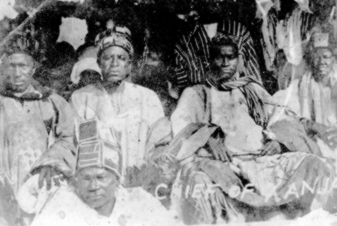 |
|
Perhaps the
oldest photo of Bulsa chiefs
from right to left: Azenaab (Wiaga), Azantilow
(Sandema), Anisomyansa (Siniensi), Aburini Akambong (Fumbisi); in front of
Anisomyansa: Atebas, elder of Azenaab’s court; in the background (hardly
visible): Ayidibe and Avade, elders of Azantilow’s court.
The purpose and year of the meeting
are not known. |
As written historical sources are very scarce, the following concise draft of the history of all
Bulsa chiefdoms must necessarily remain incomplete and perhaps even incorrect in some
details. It should be a starting point for all those who are interested in Bulsa history and
society and who want to carry out some local research. We ask all readers to let us know
about any mistakes and send us additions in the form of texts or photos.
Consulted literature:
Afoko, Francis Asianab (1970) The Ayietas
(unpublished).
Akankyalabey, Pauline (1984) A History of the Builsa
People, Department of History, University of Ghana, Legon (unpublished)
Awedoba, A.K. (2009) An Ethnographic Study of Northern
Ghanaian Conflicts: Towards a Sustainable Peace. Accra.
Azantilow Ayieta: Bulsa Tengka Korumu / The History of
the Bulsa Country (1988) Recorded and translated by. R. Schott, Münster.
National Archives of Ghana (N.A.G.), ADM-series, Accra.
Ollivant, District Commissioner (1933): History of
Buli, Nankani and Kassena speaking people in the Navrongo area.
Rattray, R.S. (1932) The Tribes of the Ashanti
Hinterland, 2 vols., Oxford.
Schott, Rüdiger:
unpublished fieldnotes.
Bachonsa
A hundred years ago Bachonsa (Bechuansi) was one of the most important Bulsa villages. It
was probably the first name of a Bulsa settlement that appeared on a map (cf. Buluk 2005,4,
p.23). After the trade route passing Sandema, Wiaga, Gbedema and Fumbisi replaced the old
routes, Bachonsa declined more and more in importance and inhabitants.
According to Pauline Akankyalabey (p. 37),
Afeok, the founder of Bachonsa, came from
Wiaga, but we do not know much about his successors.
L. Castellain, the British District
Commissioner (D.C.), writes about his visit to Bechawnsa (Bachonsa) on September
9th, 1917: "The Chief Anyunalla is old and quite blind. It is a mistake that he
died on July 1st, 1909. Chief Anyunulla has several sons. Anyawbi is the eldest.
Achemannya is next eldest, Aiyo is next". On his visit on July 11th, 1919
Anyunulla’s son was acting for his father, and on his next visit (November
18th,1920) the old chief was dead. The D.C. ordered the people concerned that on
his next visit they "must be ready for an election". But in the documents of the
National Archives of Ghana (N.A.G.) in Accra we do not find the name of the new
chief.
In Francis Afoko’s unpublished
typescript on the Ayietas (p. 8), we find a hint that around 1912 the Bachonsanaab’s name was
Ayuenala. The same author writes that in September
of 1920 the election of a chief took place,
but he does not mention the new chief’s name. One of Ayuenala’s successors was
Ayaafinyari, but here again any data or hints at a chronology are lacking.
The incumbent chief of Bachonsa is
Atuebey, who was elected on March 25th, 1977.
Biuk
My main
informant about Biuk chiefs and chieftaincy was Ataa Akankoba, the incumbent
chief. He asserts that all his predecessors
|
Biuk Chiefs
Anyaampo:
first chief in the time of Babatu
Agigsa:
reigned after 1901
Akankoba:
contemporary of Kwame Nkrumah
Ataa Akankoba:
incumbent chief, informant |
were
indigenous from Biuk and an immigration of Mamprussi, quite common among other
Bulsa villages, never took place here. (Concerning the early chiefless history
of Biuk, see Fr. Isaac Akapata, Buluk 5, 2009, pp. 34-41.)
According to Ataa,
Anyaampo was the first chief of Biuk. Under his reign Babatu, the
notorious slave-raider,
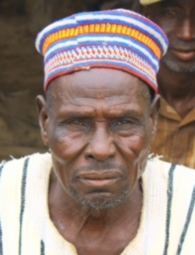 |
|
Ataa Akankoba, incumbent chief of Biuk
and informant |
attacked other Bulsa villages, which means that Anyaampo reigned in
the last decades of the 19th century. Biuk itself was avoided by Babatu because of its densely
forested surroundings, which at that time were a real obstacle to Babatu’s horsemen. During
Anyaampo’s reign a group of Mamprussi came from Nalerigu and founded the village of
Kologu. People from Naga tried to drive them away because they did not ask anybody for
permission to settle there. Biuk, however, helped Kologu in this feud and enabled them to
stay.
In the time of chief
Agigsa, Anyaampo’s successor, the British occupied Northern Ghana,
which they called the Northern Territories of the Gold Coast and made it a British
protectorate. Ataa admits that groups of white people who went from Navrongo to Kologu
were occasionally attacked by Biuk warriors. When my companion asked him why they did it,
Ataa answered, "Because they were stubborn, brave and aggressive."
Akankoba, the father of the present chief, was a contemporary of Kwame Nkrumah, and
during his reign Ghana became independent (1957).
Ataa Akankoba, the present chief, wishes for his village to join the community of Bulsa
within the Bulsa District. When the plans to build a bridge over the Tono River (the present
border between the Bulsa and Kasena-Nankana Districts) are realized, communication
between Chuchuliga and Biuk, where the inhabitants speak the same Buli dialect and descend
from the same ancestor, Avobika (Achuloa was Avobika’s sister’s son), will be facilitated. Chief
Ataa regrets that Biuk is now a divisional chiefdom under the paramount chief of Kologu,
after Biuk helped the Mamprusi strangers in their struggle to survive in this area.
Today the following four villages under subchiefs belong to the divisional chiefdom of Biuk:
Jaagui, Sensa, Zinsa and Kodema.
Chuchuliga
The
following description is, to a high degree, based on A. Awedoba’s discourse on
the Chuchuliga Chieftaincy Affair (Awedoba 2009, pp. 113-118)
|
Chuchuliga Chiefs
Gonab Apirigab (= Se migah?)
Amaachana
Atuchiga Amaachana (= Altecheg?):
installed on December 30th, 1907; dismissed by the British
Akaboba Apirigab (dismissed by the
British)
Allan Asangalisa (appointed Jan. 10th,
1926; enskinned in February (March?) 1927)
Apirime: rival chief of Asangalisa
Joseph Adakula (1995-July
2006): rival chief of Francis, abdicated in July 2006
Francis Asangalisa (rival chief since
August 1995; sole chief since July 2006) |
and on his
genealogical chart (p. 282).
The first Chuchuliga chief mentioned by him was
Gonab Apirigab, who was succeeded by
Amaachana. According to an entry in the Navrongo Station Diary (ADM 63/5/3 for October
16th, 1913), Amachenna (sic) was Bago’ (Bagao’s) slave seller, who had deposed
Semigha (=
Gonab Apirigab?) and replaced him with Amachenna on December 30th, 1907 (Awedoba, p.
114, footnote 92).
Although
Atuchiga, Amaachana’s son and successor, had initially been approved by the
British, he was eventually
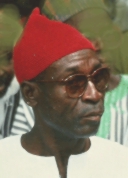 |
|
Joseph Adakula |
dismissed. The same happened to
Akapoba Apiriga, whom the
British had installed for Atuchiga and who was dismissed because he "failed to report the
outbreak of an epidemic early enough to the Regional Commissioner" (Awedoba, p. 114).
In March 1927,
Allan Asangalisa was appointed chief of Chuchuliga. His election and
enskinment was done in Chuchuliga but witnessed by Afoko, then the chief of Sandema. From
that point on, Chuchuliga came under Sandema (ibd.). Under chief Allan Asangalisa, the
conflict with the Sandemnaab escalated. During that time, Azantilow dismissed Asangalisa and
"single-handed[ly] enskinned Apirime
as chief of Chuchuliga. Apirime’s enskinment,
however, was declared null and void by a committee setup by the Governor to look into the
case" (p. 114).
After Asangalisa’s death a dispute arose about whether the new chief was to be elected: in
Sandema or Chuchuliga. As Asangalisa’s son
Francis Asangalisa, one of the contestants,
refused to go to Sandema,
Joseph Adakula Amaachana,
the other contestant, was elected and
installed as Chuchuliga chief in Sandema, while Francis Asangalisa "was duly enskinned by the
kingmakers in Chuchuliga in August 1995" (p. 115). After a violent confrontation between the
two parties, Adakula Amaachana abdicated and made peace with Francis Asangalisa in July
2006.
Doninga
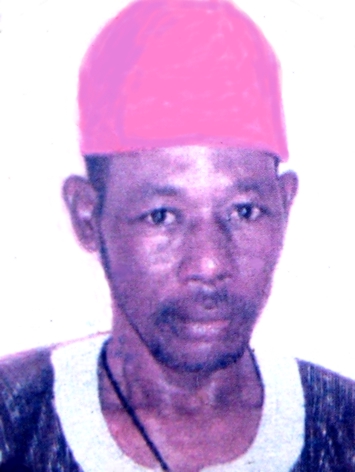 |
|
Awudum Atong |
My present knowledge about the Doninga chiefs is still very poor. By name I know only
Akaachie, who, according to Francis Afoko, lived around 1912.
Atong was one of his
successors. His son Awuudum Atong
(born in 1943) was elected chief on March 27th, 1972.
Fumbisi
|
Leaders and Chiefs of Fumbisi
Afim:
legendary leader and founder of F.
Awuuba:
Afim’s son and founder of Yerinsa
Anyiamjutee:
deposed by the British
Ayaajik:
installed April 13th, 1915
Ampusiba:
around 1912
Aburin Akambonnaab (Akambong)
Akanko:
died 1978 or 1979
Clement Anyatiuk:
since February 20th, 1979 |
Fumbisi (Fimbisi, Simbisa) was founded by the legendary
Afim, who, together with his father
Akanyanga, came from a river called Kanyanga, which is situated between Wiaga/Kadema and
Kologu. According to another tradition, the founders came from Gambaga in the Mamprusi
area (cf. R. Schott, Oral History...). Afim’s son,
Awuuba, was the founding ancestor of
Fumbisi-Yerinsa, a section from which chiefs are still elected today.
When the British occupied the Northern Territories of the Gold Coast, the then current chief
Anyiamjutee was disposed and replaced by
Ayaajik on April 13th, 1915 (Akankyalabey, p.
34).
F. Afoko (p. 8) mentions a Fumbisi chief called
Ampusiba who reigned about 1912.
While Fumbisi was growing in size and in the number of inhabitants, its main market was still
held at Naadema, some miles east of Fumbisi. It was Chief Aburini Akambonnaab
(Akambong) who displaced the market to Yerinsa, the centre of Fumbisi. After his death, he
was succeeded by his brother, Akanko, whom I met in 1973. According to Baptist, my
informant, Akanko died in 1978 or 1979 by poisoning.
Akanko’s son and successor,
Clement Anyatiuk,
was elected on February 20th, 1979, after
he graduated from Fumbisi Middle School.
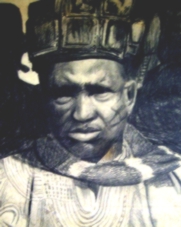 |
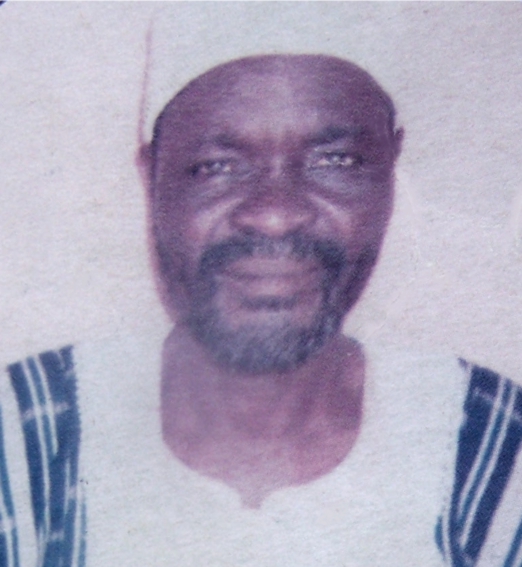 |
|
Akanko |
Clement Anyatiuk |
Gbedema
In Gbedema
there are two dynasties living in separate sections who have been the source of
the chiefs of the village. One big compound, close to the Wiaga-Fumbisi road, is
called Nakpakyeri (Old Chief’s Compound) and belongs to
the Goluk section, while the previous chiefs of Gbedema have belonged to Nayeri
in the Gbinaansa section. A detailed description about the Gbedema chiefs and
the relation between the chiefs of Nakpakyeri and Gbinaansa has been given by
Ghanatta Ayaric in this issue of BULUK (no. 6).
|
Chiefs of Gbedema
Atong (Goluk)
Amboru (around 1912)
Ayaric (Gbinaansa)
mid
1920s - 1970
Apagrimchang Ayaric: July 10th,
1971- September 6th, 2001
Nkrumah: since 2001 or 2002 |
According to Pauline Akankyalabey (p. 11), "Atong,
the first traditional chief of Gbedema,
went to Tongo and brought some fetish (boghluk), and everyone in the village used to go to
him to supplicate for its blessing. Atong became so important that people soon recognised him
as a chief." Since then a group of Tallensi have come to the descendants of Atong in
Nakpayeri to perform sacrifices to the Tongo shrine every year. Atong, whose ancestors (in
contrast to many other Bulsa villages) did not come from the Mamprusi chiefdom, lived in the
early colonial time, i.e. soon after 1901.
I was not able to make out the section of chief
Amboru (around 1912), mentioned by Francis
Afoko (p. 8).
Chief Ayaric, who reigned before 1971, and all his successors have been members of the
Gbinaansa section. After Ayaric’s death, Apagrimchang Ayaric, Ayaric’s son, and two rival
contestants from Goluk (Nakpayeri) and Dabomsa stood for the new election. Apagrimchang,
the winner, reigned from July 10th, 1971, until September 6th, 2001, and was followed by his
son Nkrumah,
the current chief.
 |
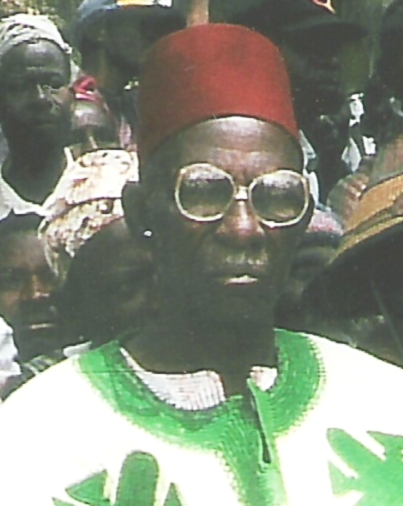 |
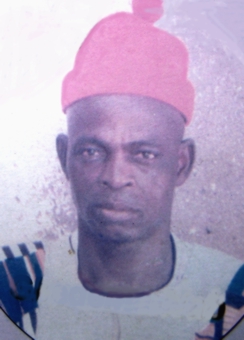 |
|
Ayaric |
Apagrimchang Ayaric (d. 2001) |
Nkrumah |
Gbedembilisi
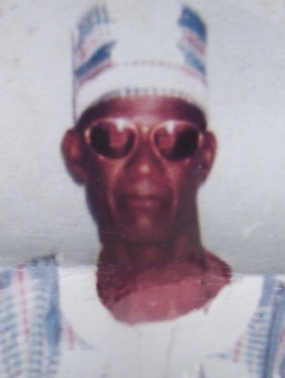 |
| Amoabil Atirikpie |
According to informants of the chief’s compound, Gbedembilisi had no chiefs before the
arrival of the British, who installed
Atengboro as the first chief. He probably reigned in the
first decade of the 20th century. His (immediate?) successor was
Akannuemiena, who,
according to Francis Afoko (p. 7-8), reigned around 1912 and was Gbedembilisi Chief when
the first resistance against the colonial rule arose. If this is true, his reign must have been
extraordinarily long.
Amoabil Atirikpie, who was installed on March 3rd, 1976, is the current chief of
Gbedembilisi.
Kadema
|
Kadema Chiefs
Akomwob
(deposed by the British)
Atigbiiro
Adaangabe
(Atigbiiro’s son): April 28th,1974
Edward Felix Ayuekanbe Adaangabe:
September 16th, 1974 - September 21st,
1995
Akisikanbe
Ayuekanbe: elected February 2nd ,
2001 |
 |
|
Akiskanbe, the
incumbent chief |
The first Kademnaab known to me by name is
Akomwob. Like many of his colleagues in
other Bulsa villages, he was deposed by British colonial officers (Akankyalabey, p. 51) and
then replaced by Atigbiiro (Atigbuir, Atibiro, Atiguiro?), who was installed by the
Sandemnaab Ayieta (P. Akankyalabey, p. 51). Edward Ayuekanbe Adaangabe, his son, was
enskinned by Akansugaasa, then the Paramount Chief of the Bulsa on September 16th, 1974,
and he held the chiefly office until his death on September 21st, 1995. When Ayuekanbe’s son
Akisikanbe stood for the election in Sandema on February 2nd, 2001, he had two fellow
contestants: Anbangpuringnaab, the late chief’s father’s son and Ajeuk, son of Anangaasa
from Kadema-Kpikpaluk. During the election, when it became quite clear that Akisikanbe was
the winner by a large majority, Anbangpuringnaab and all his adherents joined Akisikanbe,
who won the election by an overwhelming majority of 131 votes; 23 yeri nyam
(heads of compounds) voted for Ajeuk.
Akisikanbe, who was born in Mansia (Kumasi) in 1965, attended a secondary school and was
a teacher before becoming a chief (cf. also BULUK 2001, no. 2, pp. 19-20).
Kanjaga
According to Rattray (1932: 400-401), the present inhabitants of Kanjaga are the descendants
of two primordial ancestors: Akana, a Kasena blacksmith who immigrated from
Kurugu (now Burkina Faso) and after whom Kanjaga was named, and Anyala from
Konyon, a now abandoned village between Wiaga and
|
Kanjaga Chiefs
(without consideration
of Rattray)
Akanchoruk:
contemporary of Babatu
Adachoruk:
around 1912
Atibil:
deposed by the British
Akinkangnaab:
installed by the British
Akanfela:
Akansianaab Akanfela:
November 18th, 1975 - 2000?
Akanjievari Akanfela:
since February 14th, 2001 |
Kologu.
Anyala was the forefather of six Kanjaga clans, among them the Nyakpere
(Nyakpensa), the chiefly clan today. The late Sandemnaab Azanlilow, however,
told R. Schott that the Nyakpensa clan immigrated from Sandema-Nyansa.
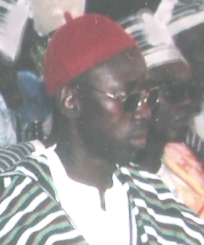 |
|
Akanjievari Akanfela |
In the course of history there were fights between the descendants of Akana and Anyala in
which the Konyon people were able to obtain chieftaincy for their own lineage. Rattray mentions the following men as early leaders and, later, chiefs of the Konyon:
Apiu,
who died in a battle with Akana’s people, his son Abatwaa
and, after him, Anwun, who died
of smallpox. His successor Acholo (Acholuk) died at Navaro (Navrongo) and was succeeded
by Akanab and then by
Anyatua, the incumbent chief in the time of Rattray’s fieldwork. He
may be F. Afoko’s Anyemtuik, the man "who, backed by ex-service men, tried to break away
from Sandema several times" (p. 8).
Rattray’s
list of Kanjaga chiefs does not always correspond to information from other
sources. Akanbongnaab (Fumbisi) told R. Schott about one Akanchoruk, who co-operated with
Babatu and was deposed after the slave-raider’s defeat (probably after the battle of Kanjaga on
March 14th, 1897). F. Afoko (p. 8) mentions a Kanjaga chief called
Adachoruk who lived
around 1912 and might be the same person as Rattray’s Acholo. Likewise, according to P.
Akankyalabey (p. 51-52) the British colonialists deposed a Kanjaga chief called
Atibil and
replaced him with Akinkangnaab
(Akangnaab), a man who may be identical to Rattray’s
Ankanab. Some of the discrepancies with Rattray’s list may perhaps be explained by the fact
that chiefs often adopt different names after their installation or are known by different names
to different groups.
Complete proof of knowledge exists only about the last three chiefs:
Akanfela (whom I
visited in 1973), his son Akansianaab Akanfela (November 11th, 1975 until 2000 or 2001)
and Akanjievari Akanfela
(since February 24th, 2001). According to James Agalic, the rival
contestants of Akanfela and his son, Akanjievari, came from Ameria Yeri, a compound in
which the descendants of Ameria, originally one of Babatu’s high-ranking officers but later a
mutineering adversary, are living.
Kategra
|
Kategra Chiefs
Anchar:
around 1912, perhaps until 1925
Aninlik:
in the 1950s
Amoaning
(Azue Yeri):
in the time of Nkrumah
Awienboa
(Nakpak Yeri)
Abukari
(Nakpak Yeri)
Atumani Alimba
(Azue Yeri): informant 2011 |
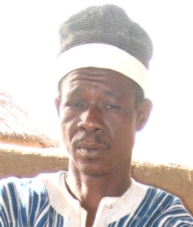 |
|
Atumani Alimba |
From the early history of Kategra, the names of two chiefs are mentioned by F. Afoko: Chief
Anchar, who reigned around 1912 (p. 8) and was probably chief until 1925
when Aninlik was elected on April 20th. As many people of Kategra had moved to
Jadema, Aninlik resided in Jadema, too (They all returned to Kategra in
September of 1933). According to F. Afoko, Aninlik was chief in the time when
Sandemnaab Azantilow filed a lawsuit against the Mamprusi Nayeri (1951-1952) in order to
regain the villages Kunkwa, Kategra and Jadema. Aninlik probably reigned before
Amoaning,
the first chief mentioned by Atumani Alimba, my informant in 2011.
In Kategra there are two dynasties competing for chieftaincy: one is associated with Azue Yeri
(the present chief’s house) and the other with Nakpayeri (Old Chief’s house). After Amoaning
(Azue Yeri), who lived in the time of Kwame Nkrumah, the following two chiefs,
Awienboa
and Abukari, came from Nakpak Yeri and the present chief,
Atumani Alimba (whom I
visited in February 2011), lives in Azue Yeri.
Kunkwa
I was given the following account on Kunkwa chiefs by Richard Yidaana Yakubu, the present
regent of Kunkwa, who has an excellent knowledge of the history of his village.
|
Kunkwa Chiefs and Leaders
Asavie:
(no real chief) immigrated from Nalerigu
Akpabil (Abili?, ):
in the time of Babatu
Asaponing:
elected on May 26th, 1906
Akwabil:
elected on November 25th, 1920
Akumboti:
first "real" chief of Kunkwa, conflict with Afoko
Apanga:
(= Akparanga?) deposed by the British
Akurukpabil:
after 7 years deposed and reinstalled
Anabil:
Azantilow’s lawsuit 1951-52 during his reign
Awienkoa:
not recognized as a chief by some people
Yakubu Ayisiyelung
Ayuekanbe Yakubu Hamza:
high-ranking police officer in Accra
Regent: Richard Yidaana Yakubu
(informant) |
The first "big man" and "leader" known to the Kunkwa people was
Asavie, although he
didn’t, as Richard confirms, have the status of a chief. Like Atuga, the first known ancestor of
the Bulsa villages of Sandema, Kadema, Wiaga and Siniensi, he immigrated from Nalerigu,
though not together with Atuga. Rather, he accompanied the chief of Wulugu, a
Mamprusiman, who settled in Kpasinkpe and became chief of that village.
The first Kunkwa chief mentioned in
the N.A.G. files (Accra and Tamale) was
Abili
(Abile). In 1909 the British D.C. was told that Abili "died several years ago.
It is reported that he died of wounds received whilst fighting with Babatu and
his raiders". On May 26th, 1906 "one
Asaponing
was unanimously elected" by the Kunkwa headmen. He died on August 9th, 1909.
Probably in the same year Aparinga, an old man, was elected. He reigned until
1920.
On November 25th, 1920,
Akwabil,
son of a former chief named Akume (??) won the chiefly election against Natorma,
his rival contestant (with 292 to 237 votes), although the D.C. had favoured
Natorma. On November 14th, 1926 Akwabil was suspended and after the decision of
the C.C.N.T. removed from office. According to the N.A.G. (Accra), his successor
was Anabil, who was elected (with 83 votes) on August 8th, 1927. His competitors
were Ating (with 64 votes), Agang (regent after Akwabil; with 55 votes) and
Anuya (with 39 votes). After the election Anabil declared himself to be a
follower of the Sandema Headchief.
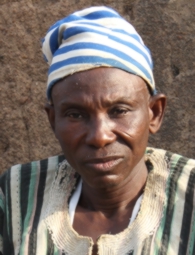 |
| Richard Yidaana (Regent) |
According to Regent Robert Yidaana, the first real chief of Kunkwa was
Akumboti. He was
in conflict with Afoko, the Paramount Chief of Sandema, who, under pressure from the
British, made people of Kunkwa carry wooden logs from the bushlands to Navrongo. This
resulted in the separation of Kunkwa from the paramountcy of Sandema (see separate article
in this journal).
Akumboti was followed by
Apanga (=Akparanga of the Tamale archive?), one of Richard’s
ancestors who was removed from office by the British. They gave the chiefdom to
Akurukpabil, who, after a reign of seven years, was deposed by Afoko, the Sandemnaab, but
was reinstalled after some time. During the reign of Anabil, Akurukpabil’s successor, the
Sandemnaab Azantilow conducted an unsuccessful lawsuit in Zuarungu and Accra to regain
Kunkwa for the Bulsa District (see separate article).
Anabil was succeeded by
Awienkoa, but he was not recognized by Richard’s family because
he became chief before the funeral of his predecessor had been performed.
After Awienkoa’s death in 1968, Richard’s father,
Yakubu Ayisiyeling, was installed as a
chief (Yakubu’s father, Azaala, had never been chief).
Ayuekanbe Yakubu Hamsa, who followed his father Yakubu, was a high-ranking police
officer in Accra at the time of his election and could not give up this office. Therefore he
installed Richard Yidaana Yakubu,
his younger brother, as regent of Kunkwa. Richard had
been a teacher before and speaks good English; thus, the interview could be conducted in
English.
Today Kunkwa is a chiefdom under Nabila, the divisional chief of Kpasinkpe, who is at the
same time professor of geography at the University of Ghana (Legon).
My research in the archive of Tamale
and Accra (N.A.G.) approved most of Richard’s information, but there are also
some differences. Therefore these data are treated here separately.
Sandema
see long article in Buluk 6: Franz Kröger: Extracts
from Bulsa History: Sandema Chiefs before Azantilow
Siniensi
The destiny of the Siniensi chiefdom in the colonial period resembles that of other chiefdoms
of that time.
Chief Abagyi
(Abaji) from the section of Yikpenyeri was deposed, and
Abadiin
Akpiok (Abaduin) from Siniensi-Akpiokyeri was installed as chief (Akankyalabey p. 51-52).
He was succeeded by his son
Anisomyaansa,
who was followed by his son Afulang
Anisomyaansa on July 4th, 1963. Afulang was one of the first chiefs with a thorough school
education. He continued to teach at Siniensi Primary School after he had become a chief.
After his death, his son
Gilbert Afulang
was installed on February 28th, 1995.
|
 |
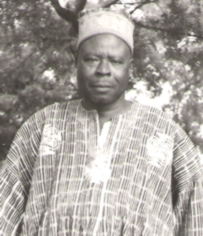 |
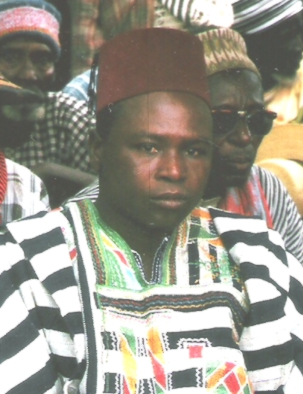 |
| Anisomnyansa |
Afulang |
Gilbert Afulang |
|
Siniensi Chiefs
Abaagyi
(Yikpenyeri): deposed by the British
Abadin
Akpiok (Akpiokyeri)
Anisomyansa
Afulang:
July 4th, 1963- 1994?
Gilbert A. Afulang:
since February 2nd, 1995 |
Uwasi
|
Leaders and Chiefs of Uwasi
Jugon: before 1850
Awudiok: only a leader in the time of
Babatu
Akobil
Apasukpe
Ambowen: installed by the British (=
Anbiwa? documented for for 1917)
Abiako Apasukpe: swearing-in 1973
Akuku: present chief |
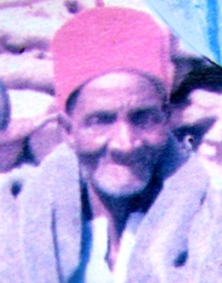 |
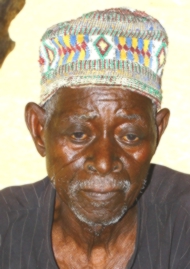 |
|
Abiako Apsukpe |
Akuku |
Ollivant (1933, p. 3) mentions a Uwasi chief called
Jugon who died "about fifty years before
the British arrived." Because of financial problems, no chief was elected after him for a long
time.
Chief Akuku, my informant in 2011, told me that during the time of the slave-raider Babatu, a
certain Awudiok
was the leader of the Uwasi people, but he was no real chief. Awudiok’s
successors were, again using Akuku’s information, Akobil
and then Apasukpe.
Ambowen,
Apasukpe’s son, was installed by the British, probably in the early years of the 20th century
and, according F. Afoko (p. 8), he was still ruling in 1912. When I attended the swearing-in of
the Bulsa chiefs on June 23rd, 1973, Abiako Apasukpe was chief of Uwasi.
I was able to interview
Akuku, the present chief, in January 2011. He was proud of the new
developments accomplished within Uwasi in the preceding years: In the centre of Uwasi, near
the chief’s compound, there were several Christian churches, a clinic and two primary schools.
A junior secondary school was under construction.
Vare
I know only three chiefs’ names of
the now abandoned village, namely Awenboleni Adebugu,
(installed on March 3rd, 1947), Amakum (enstooled
on June 17th, 1925) and his successor, Adibug (installed on June 21st, 1937),
who died in July of 1943.
In the British files these Vare "chiefs"
are referred to as headmen (of the Vari Section).
The small remainder of the ever-decreasing population
of Vare migrated to Bachonsa where they constitute one clan-section today.
Wiaga
Before the colonial period, Wiaga Yimonsa provided the Wiaganaaab (Chief of Wiaga).
According to my informant, Leander Amoak,
|
Wiaga Chiefs and Contestants:
Akadiri:
first chief according to L. Amoak
Ayega:
son of Afichoa, whose bogluk is in Nakpak Yeri, was the first chief
according to Angmeenbil.
Awuudi
Atiim
Ajata
Akiruk
Akansomsi
Apik
Awuumi
(last chief of the dynasty)
Ateng
(Yisobsa, d. 1909), contestant: Abasing (Yimonsa)
Azenaab
(1909- September 17th, 1947); contestants: Abasing, (Afichoa’s son, Yimonsa)
et. al.
Asiuk
( April 4th, 1948 - 1988), contestants: Akanpaginaab (Awumi’s son,
Yimonsa) et. al.
Assibi Aloys Asiuk
(March 13th, 1989); contestants:
Angmeenbil et.al.
|
chieftaincy was brought to Yimonsa by
Akadiri,
who had left the Bulsa area as a young man and returned with the symbols of chieftaincy (a
cowhide and a red cap). On my visit to Nakpakyeri (Old Chief’s Compound) in 2002,
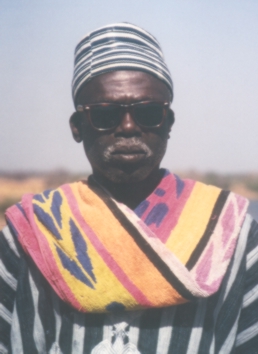 |
| Angmeenbil in 2002 |
Angmeenbil, one of the elders, enumerated a long list of former chiefs from his family (see
box), but not all of them were probably chiefs in the modern sense. Perhaps they were rather
leaders (e.g. in war) or just "big men" (dobreba, ‘wealthy men’ or pagreba, ‘strong or brave
men’; Akankyalabey p. 18). P. Akankyalabey also mentions a Yimsonsa chief called
Anankasa whom I could not place in Angmeenbil’s list. She notes in her thesis that, "...the
first British who visited the town [Wiaga] called on the chief (Awuumi) to provide him with
carriers. Awuumi, however, refused to do this and a young man from the Yisobsa section
came forward and organised members of his household to help the Whiteman. When the
‘Whiteman’ got to his destination [Gambaga?] he gave instructions that any official who visits
Wiaga should contact Ateng
[the young man] as a chief. In this way, the chieftainship was
transferred from the Yimonsa section to Yisobsa section of Wiaga" (p. 51).
Although chieftaincy never returned to Yimonsa, candidates from this section contested
candidates of the new dynasty in every election (see box).
After Ateng’s death,
Azenaab (1909 - September 17th, 1947) followed his father. Their
family had lived in Wiaga-Chandonsa, but after Azenaab’s election he and his family moved
from their traditional compound to the central crossroads (Goansa), where they built a
compound, which, in spite of many renovations and architectural changes, is still used by the
chiefly family. Azenaab was the first chief to profit from the new British strategy of "indirect
rule," which gave the chiefs great power, greater perhaps than before British rule. In the rituals
of the Sandemnaab Azantilow’s instalment, Azenaab was the most senior of all the Bulsa
chiefs and had to perform many ritual and administrative tasks. The village of Kunkwa even
wanted Azenaab to become Paramount Chief (Akankyalabey, p. 55), but he refused. Under
pressure from the British, Azenaab sent some of the boys from his family to Navrongo school.
One of these was Asiuk, another son of Ateng, who became Wiaganaab on April 4th, 1948.
After Asiuk’s death in 1988, the election of a new chief took place in Sandema on March
13th, 1989. Assibi Aloys Asiuk was elected new chief out of the following contestants:
Assibi Aloys Asiuk: 287 votes
Akantoganya: 93 votes
Angmeenbil (Yimonsa): 66 votes
Kwame Atongdem: 20 votes
other candidates included: Aburinya Agoldem, Azuedem Azenaab, Aguumi Herbert, Anayang
Peter, Akaboko Thomas, Apiini Thomas, Akanjaganaab Agoldem Albert.
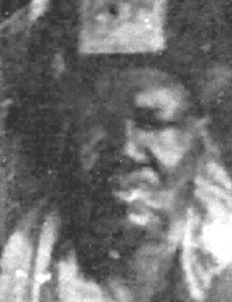 |
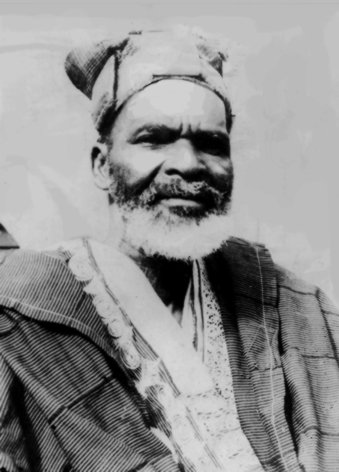 |
 |
| Azenaab |
Asiuk |
Assibi Aloys Asiuk |
Wiesi
The first Wiesi chief known to me
by name was
Apasungbe
/ Apasube, who, after Francis Afoko, reigned around 1912 and according to an
N.A.G. document died in January of 1925.
The election of a new chief was held
on November 17th, 1925. Anankwen, a son of the late chief garnered 225, his
contestant Abotempo received 81. Chief Anankwen died in the beginning of
December of 1933. Akamba, an old man and elder brother of the late chief was
acting. The British D.C. was in favour of Akamba as the new chief, but
Abotempo was installed as chief on
December 16th and died in 1937.
On July 22nd, 1939 Abuntore, regent
for the preceding 15 months, was elected Chief in the presence of the D.C. and
the Chief of Sandema. Ayedana, youngest son of Apasube (who died in 1926) had 30
votes to Abuntore’s 33. Abazerimi also stood but had no following. Aywenkegli of
Ipala Section wished to stand but was ruled out, because he wasn’t part of the
chief’s family.
Roland Leo Amoabil (Sept. 27th, 1969 - April 11th, 2000) was a primary school teacher
before his instalment and was one of the first Bulsa chiefs who confessed his Christian belief
publicly. At his death in Sandema hospital, he was a member of the Bible Church of Africa.
His successor is Raphael Abuntori.
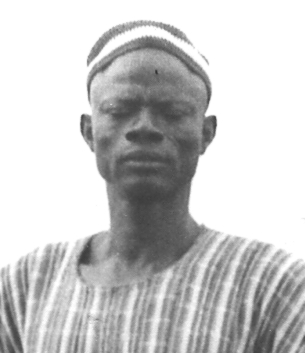 |
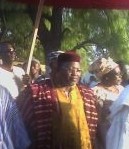 |
|
Leo Amoabil 1978 |
Raphael Abuntori 2011 |
























